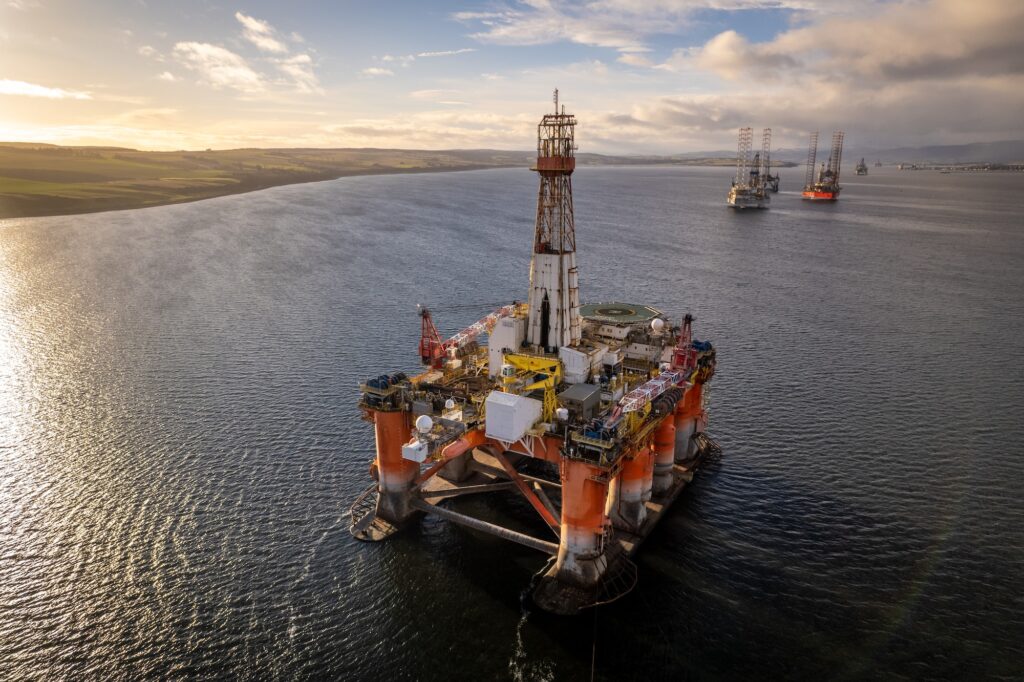With project investment worth $214B or above lined up, the global offshore oil and gas (O&G) industry is poised to get a massive boost in the next two years.
The annual greenfield investment is predicted to hit a decade-high record in 2023 and 2024, said OILPRICE.com citing Rystad Energy research.
The Comeback Is Happening Now
Offshore production projects are forecasted to comprise roughly 68% of all approved traditional hydrocarbon-based projects during the projection period 2023-24—up from 40% during 2015-2018.
This expected activity increase is buoyed by strong oil prices and rig demand. As of March 07, 2023, WTI crude oil values $77.76 per barrel, which is high enough to prompt operators to boost production activities, and that should continue into next year.
Additionally, the cost of imported fossil fuels has spiralled upward since 2022 as supply chain challenges have been exacerbated by Russia’s invasion of Ukraine.
The Ukraine conflict is anticipated to propel the development of relatively high-CAPEX offshore (both platform and subsea-based) O&G projects, with a range of regions like Europe shunning Russian fossil fuels and seeking ways to ramp up energy production from alternative sources.
The result: offshore schemes will constitute almost 50% of the total projects expected to get sanctioned globally between 2023 and 2024, which was only 29% during 2015-18.
Experts expect these new projects to be the key factor in driving the expansion of the offshore system market, with supply chain investment to witness an upturn of 16% between 2023 and 2024, a record-high year-on-year increase of around USD 21B in the last ten years.
Other Key Players Stimulating Subsea Production Activities
As global demand for fossil fuel continues to pick up, casting about carbon-free energy sources has now become a major concern. The world is set to undergo an energy transition as it slides away from fossil fuels to less carbon-intensive energy sources.
As one of the least carbon-intensive hydrocarbon extraction techniques, offshore O&G production offers the industry a solid footing for significantly decoupling carbon dioxide emissions from the production process.
“Offshore oil and gas production isn’t going anywhere, and the sector matters now, possibly more than ever. As one of the lower carbon-intensive methods of extracting hydrocarbons, offshore operators and service companies should expect a windfall in the coming years as global superpowers try to reduce their carbon footprint while advancing the energy transition,” stated Audun Martinsen, head of supply chain research with Rystad Energy.
Citing Rystad Energy, Offshore predicts the subsea production sector to reign in the offshore industry, with a substantial number of subsea trees up for grabs in the upcoming years.
With subsea oil production boosting, ensuring high-end reservoir monitoring has become the key concern today.
For subsea production operators looking to increase production while minimising OPEX across a subsea well lifecycle, investing in a permanent reservoir monitoring system like Silixa is a sensible decision.
By enabling intervention-free operations and delivering a high-seismic signal-to-noise ratio for seismic surveys with fewer shots, a high-end reservoir monitoring system significantly saves on operation time and cost.
Offshore Sector Comeback: The Global Outlook
An uptick in high-impact drilling activity in offshore Namibia, the Gulf of Mexico, South America, and the Eastern Mediterranean is the key player in accelerating the development of the subsea oil production sector.
Case in point: The highly stable high-impact drilling has helped resource discovery soar to 9.2B barrels of oil equivalent (boe) in 2022—up from 7.4B boe in 2021, according to Westwood.
On the other hand, the proportion of discovered wells with the potential to turn into commercial development rose to 36% in 2022 from 29% in 2021.
Again, with 47 production licences awarded to a total of 25 oil companies by the Royal Norwegian Ministry of Petroleum and Energy in January 2023, the country is heading for an oil production surge.
While Norway is fast becoming the key player in helping Europe reduce its reliance on Russian energy imports, uncertainties spurred by the Energy Profits Levy are still looming over the UK.
However, offshore development spending in the UK is predicted to increase 30% in 2023 to a total of $7 billion.
The Middle Eastern offshore sector will steadily expand, if not booms, while South American spending is projected to plunge in 2025.
Wrapping Up
With the world trying to deal with the current energy crisis, more emphasis is placed on capitalising on the subsea reservoirs as affordable and safe energy sources.
